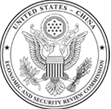×
Filter Results
Filter Results

Research
Key Points:
Since its last overhaul in 1994, China’s flawed fiscal system has muddled through. Local debt, slowing revenue, and greater spending obligations are now spurring a new round of reform under President Xi Jinping;
By eliminating the so-called “business tax,” Beijing is allowing services companies to enjoy the same tax deductions and rebates manufacturers do. The government may also establish a price-based tax on coal and a recurring tax on property;
The government ultimately seeks to rebalance the economy. Fiscal reform could boost services, prevent housing bubbles, redistribute income, and reduce pollution. But it will be difficult to implement in China’s segmented economy and authoritarian system;
The central government has a clear vision for improving budget flexibility and transparency. Yet it remains ambivalent about how to share revenue, spending responsibilities, and borrowing authority with local governments.

Research
Key Points• Chinese authorities have used Hong Kong’s position as a global financial center to promote the use of the RMB abroad. Hong Kong is the oldest and largest market for offshore RMB transactions, and will remain so despite the emergence of several other offshore contenders.
• To date, RMB internationalization efforts have involved three main channels: offshore RMB deposit accounts and bonds, use of the RMB for cross-border trade settlement, and establishment of RMB swap lines between the People’s Bank of China and other central banks.
• Despite growth in onshore and offshore use, the RMB cannot become a true international currency until Chinese authorities liberalize China’s capital account, allowing for unrestrained movement of financial flows.

Research
This paper provides an overview and assess key points of China’s 2014 Government Work Report’s plans for financial system liberalization, fiscal reform, administrative reform, environmental regulation, urbanization and rural land reform, and healthcare reform.

Research
The U.S. trade deficit with China continues to grow but at a slower rate. A key reason for this is the boom in U.S. automotive and aerospace shipments to China. As China becomes more affluent and urbanized, ordinary Chinese are driving more cars and traveling more by frequently by air. China’s future demand, however, could be affected by pollution, traffic bottlenecks, and other factors. U.S. companies must also contend with China’s industrial policy, which tilts the playing field toward domestic industry. In the long run, technology transfer and off-shoring could erode U.S. competitiveness and take business away from U.S. plants.

Research
Today the U.S.-China Economic and Security Review Commission released a Staff Research Backgrounder on "China's New Income Inequality Reform Plan and Implications for Rebalancing." The backgrounder examines China's already large and steadily growing gap in income and the Chinese Communist Party's efforts to address it. The report was written by Nargiza Salidjanova, USCC Economic and Trade Policy Analyst.

Research
Today the U.S.-China Economic and Security Review Commission released a staff report entitled “The Reliability of China’s Economic Data: An Analysis of National Output” that examines the quality of China’s national output statistics. The report was written by Iacob N. Koch-Weser, an Economic and Trade Policy Analyst for the USCC.

Research
Written by USCC Research Coordinator John Dotson

Research
Prepared for the USCC by Andrew Szamosszegi and Cole Kyle, Capital Trade, Incorporated

